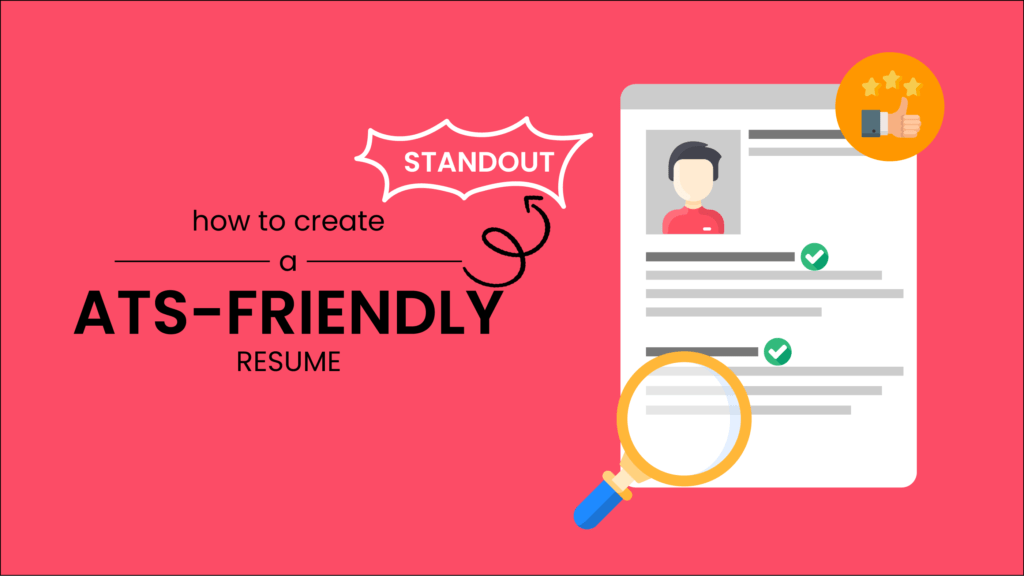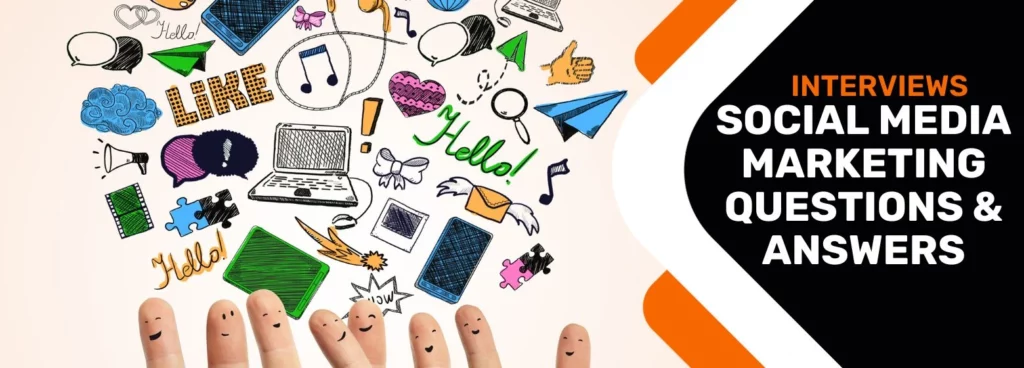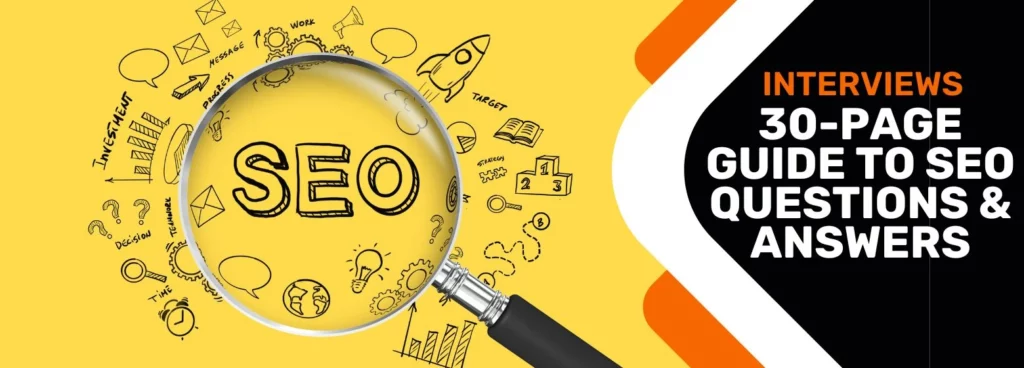How to Create a Standout Applicant Tracking System (ATS) – Friendly Resume

Your resume is one of the greatest obstacles standing between you and your dream job that you need to overcome. Did you know that before your resume lands in the hands of a recruiter, it goes through an Applicant Tracking System (ATS) first?
A few questions that arise in every job aspirant’s mind when they apply for their dream job;
- I have made a stellar resume, very much apt for the role, but never get a call from the recruiter.
- I have all the necessary skillset suitable for the job, but the recruiter never bothered to call me.
- My colleague (applying to the same role) who does not even stand a 50% chance, made it to the first cut. But strangely the recruiter ignored my profile.
- I am curious to know whether the recruiter even got a chance to see my profile.
- Despite having met all the parameters, why was my application ignored?
In a highly competitive talent market, most companies use ATS to help manage the process of incoming applications. Large companies get thousands of resumes on a weekly basis and it is nearly impossible for a human to go through every of these applications. By utilizing an ATS, it cuts approximately 80% of resumes that don’t match the required job criteria posted.
We're here to help your resume standout to your hiring manager. In this article, we equip you with all the knowledge to bypass the ATS and help you craft an outstanding resume for software engineer.
1. Pick the right resume format

There’s actually a formula behind crafting a resume layout that would please both the ATS and your recruiter. It is advised to arrange your resume reverse-chronologically, meaning putting your most recent job experience first. This is the preferred layout to implement as its easier for the ATS to scan and shows the recruiter relevant experience. Choosing a format that’s easy on the eyes is also advised, so be sure to use a simple font and stick to bulleted lists when writing about your experience or projects.
If you are preparing your resume in PDF file type, never keep important information in an “image” format. Reason being is that some 'ATS’ may not able to process the text in the images.
2. Use ATS-friendly file type
While most ATS accepts file types such as .doc, .docx, and .pdf, we recommend using .pdf as it works great in maintaining its layout and design. A good practice is to keep a version of your resume saved as a Microsoft Word document, so you can easily make any revisions and convert the final version to PDF.
At times, job listings may also indicate what file they would like their resume to be presented in, so be sure to read the submission requirements thoroughly before uploading it.
3. Include quality and relevant keywords

When navigating through the ATS, hiring managers will punch in essential keywords that would be reflected in a perfect candidate’s resume. The ATS would then use these keywords to do a quick scan of each resume, and rank those that contain these keywords to the recruiter. Therefore, optimizing your resume with relevant keywords can help in making your resume more ATS-friendly and potentially land at the top of the stack.
To start, carefully inspect the job description and see what potential keywords you can integrate into your current resume. Make sure that the keywords you identified have the right mix of hard and soft skills that they’re looking for. Then, make sure to use these keywords in different parts of your resume, like work experience, key skills, and achievements.
After you’ve implemented our tips, you can upload and scan it here to make sure that it’s ATS-friendly. Now that we’ve covered the easy part, on to the most crucial task: forming an impressive resume that will standout to your recruiter.
Tips to Creating an Outstanding Developer Resume
1. Show your tech know-how
This may seem like a no-brainer, but you’ll be surprised at how many fail to communicate their technical knowledge effectively.
An effective method of showing your tech know-how is to have a dedicated section on the first page of your resume outlining the programming language and technology you’re familiar with. Don’t bother to write your level of expertise with the technology, as it is automatically assumed that you’re confidently proficient in them if you’ve listed it down. Remember, the skills you include should be ones that you’re proficient in, not just any skill you think should be included because you know it exists! Another way to show your tech know-how is to weave it into your work experience. By doing so, you simultaneously show how you’re able to implement your knowledge to produce results.
If you have enough space in your resume, doing both is recommended as the hiring manager can easily reference what technology you’re familiar with and understand how you were able to implement them in your past experiences.
2. Don’t write about what you did, write about the impact you made
One aspect lacking in most resumes is how well the work experience is written. Although most applicants are great at writing about their previous job role, they fail to communicate the quantifiable impact that they contributed. To standout from other applicants, you need to show measurable impact through numbers or percentages.
A career coach once advised me to use a simple writing guide to ensure that your job description hits all the right marks by using the STAR method. STAR is an acronym for Situation, Task, Action, and Results. First, explain the Situation and Task by talking about the background of your work and the tasks they handed to you. Next, outline any specific programming languages or technology you used to achieve these tasks. Lastly, show measurable results by conveying your impact through numbers or percentages. By applying this method, you’re sure to make your experience unique from the rest.
Here’s a simple example. Instead of writing "Lead the tech team to develop an employee tracking software”, write "Lead a team of 5 to develop an employee tracking software that increased work productivity by 20%”. Which one stands out to you?
3. Pick the right projects to showcase
Remember that a good resume should only be about 1-2 pages long. This means that you’ll have to be selective in what projects you show, although making this decision may seem difficult. Here are several factors you should consider to determine which projects to include:
- Based on programming languages or technologies - The most important factor is to consider the role you're applying for and what they have listed on the job description. They will most likely list the specific programming languages or technology experience required, so prioritize on listing projects that can fulfill those requirements.
- Based on project recency - Filter projects based on recency, as in most cases projects that are more recent are perceived to be more relevant. Alternatively, you can still include all your projects by inserting a link to your online portfolio that the recruiter can access if they’re interested.
Another question you may have in mind is how to strike a balance between the projects that you choose to showcase and your work experience. Work experience takes priority, so you should only fill that resume up with more projects if you’re still new to the job market and lacking in relevant work experience.
4. Tailor your resume to the job description
A piece of advice that we’ve been stressing throughout this entire article is the importance of having your resume fit the job description. Even though this may seem obvious, we tend to overlook this and upload a standard resume when we’re mass applying for jobs. This means that your resume is not customized to the job role, and you’ll lose out to competitors who are able to match their resume to the job description.
One of my friend’s career mentor gave him valuable advice that helped him land a job, which was to keep one master resume to reference and personalize the resumes you send to the job description. You should scan through the job listing and see which of your work experience and projects would suit the role, and lift it from your master resume to the one you’re uploading. Although this may seem like tedious work, it helps the ATS parse your resume easily and indicates to the hiring manager your relevance score for the role.
Popular research and trends have shown that on average a recruiter spends 6 seconds to scan the resume and decide if he/she would be a fit for the role. So, you got only 6 seconds of precious time to make that stellar impact on the recruiter. Therefore, take the time to sit down, look through your resume, and make sure that you’ve applied our tips before you send out your next job application.
If you’re still finding difficulty in getting a callback, keep revising your resume and see what else you can refine. At times, we tend to have a biased view towards our own resume and find it difficult to identify any faults. Have a trusted friend or mentor criticize your resume, and see what you can improve from there.
But once you’ve received that first call, it doesn’t end there. The next hurdle to overcome is to ace that first interview. Be sure to check out our collection of interview tips to make sure you’re all set for your upcoming interview!
Reference: Optimizing your resume for the ATS/Bots by Chandrakanth Patthi
Backend Technology Interview Questions
C Programming Language Interview Questions | PHP Interview Questions | .NET Core Interview Questions | NumPy Interview Questions | API Interview Questions | FastAPI Python Web Framework | Java Exception Handling Interview Questions | OOPs Interview Questions and Answers | Java Collections Interview Questions | System Design Interview Questions | Data Structure Concepts | Node.js Interview Questions | Django Interview Questions | React Interview Questions | Microservices Interview Questions | Key Backend Development Skills | Data Science Interview Questions | Python Interview Questions | Java Spring Framework Interview Questions | Spring Boot Interview Questions.
Frontend Technology Interview Questions
HTML Interview Questions | Angular Interview Questions | JavaScript Interview Questions | CSS Interview Questions.
Database Interview Questions
SQL Interview Questions | PostgreSQL Interview Questions | MongoDB Interview Questions | MySQL Interview Questions | DBMS Interview Questions.
Cloud Interview Questions
AWS Lambda Interview Questions | Azure Interview Questions | Cloud Computing Interview Questions | AWS Interview Questions.
Quality Assurance Interview Questions
Moving from Manual Testing to Automated Testing | Selenium Interview Questions | Automation Testing Interview Questions.
DevOps and Cyber Security Interview Questions
DevOps Interview Questions | How to Prevent Cyber Security Attacks | Guide to Ethical Hacking | Network Security Interview Questions.
Design Product Interview Questions
Product Manager Interview Questions | UX Designer Interview Questions.
Interview Preparation Tips
Strength and Weakness Interview Questions | I Accepted a Job Offer But Got Another Interview | Preparation Tips For the Virtual Technical Interview | 7 Tips to Improve Your GitHub Profile to Land a Job | Software Engineer Career Opportunities in Singapore | What can you expect during a whiteboard interview | How To Write A Resignation Letter | Recommendation Letter Templates and Tips.
Quick Links
Practice Skills | Best Tech Recruitment Agency in Singapore, India | Graduate Hiring | HackerTrail Litmus | Scout - Sourcing Top Tech Talent in ONE Minute | About HackerTrail | Careers | Job Openings.






I noticed that recently more and more people highlight their key skills or achievements on the left-hand side in a table that has a colourful background. The main text is on the right-hand side. In my eyes, it makes the resume a bit difficult to read. Do you think, the structure matters to ATS?
There is a list of recommended font type such as Times New Roman, Arial, Calibri and Verdana. Don’t forget, it is not just about ‘satisfying’ the ATS, but also the human eyes. So you would want to keep your resume overall looking clean and yet professional. So avoid Comic Sans (well, unless it could help with the job you are applying to) and neon color palette on the resume 🙂
Does the design (colours, fonts) matter to ATS or can we get away with bold choices? @Ena @samath4me